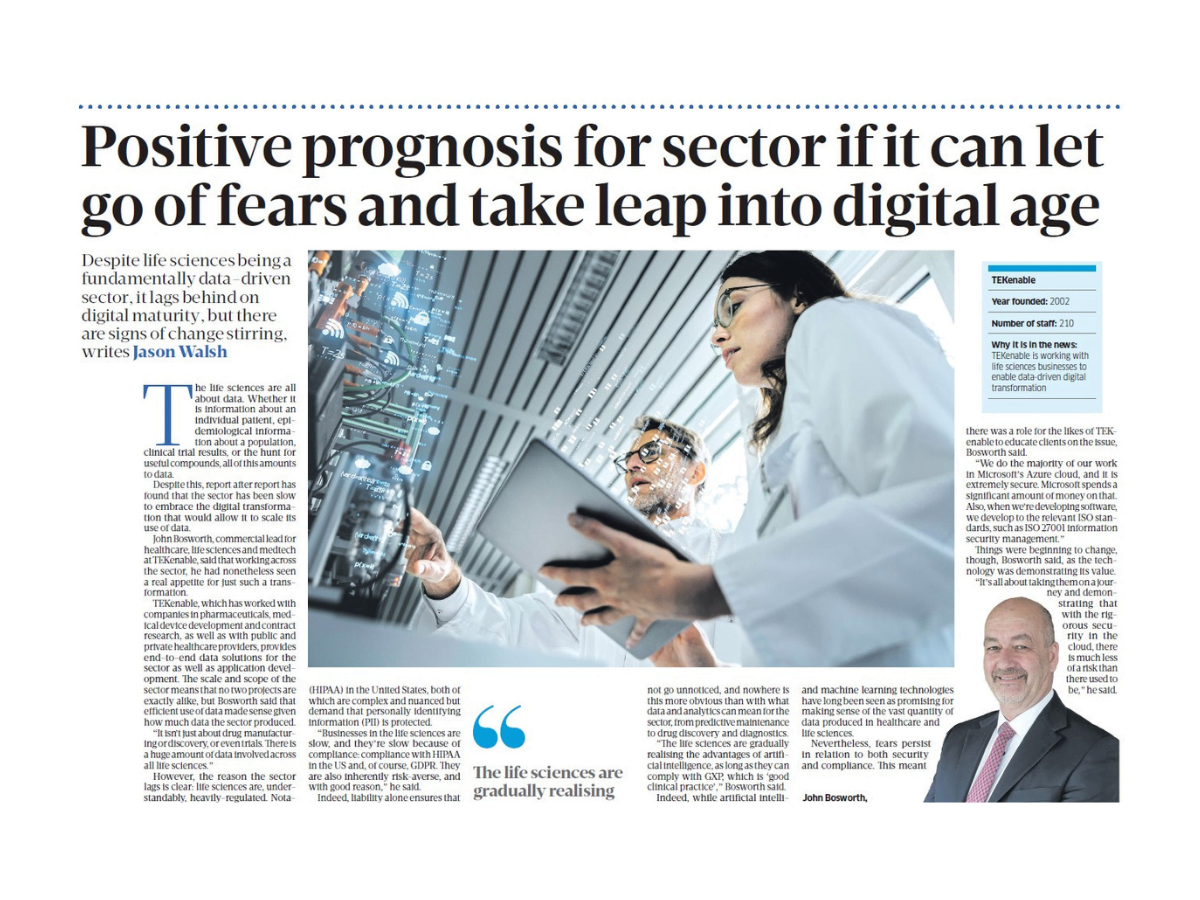In some cases, AI may replace low-code applications, but the true power of personalisation is unlocked by combining AI-enabled development with low-code and no-code platforms.
TEKenable group Chief Technology Officer, Peter Rose, looks at how artificial intelligence (AI) and low code applications can be used to quickly meet business objectives.
In the future everyone will develop software. That was the idea anyway: at the dawn of the personal computing age, the dream of executives, architects and accountants developing custom applications seemed a reasonable one. After all, merely operating a computer required some understanding of programming and a basic conceptual understanding of things like filesystems. Had this happened, the upshot would have been that rather than relying on jack-of-all-trade monolithic apps everyone would be running software that did exactly what they wanted.
Of course, things didn’t quite work out as expected. Software development is hard, after all, and was even harder in the days before shared libraries and when slow processors meant decent speed could only be achieved by resorting to coding in assembler. As a result, over time, the PC proved its usefulness more as a device than a customisable tool. Perhaps it was for the best: we were certainly spared a lot of unsecured code written in outdated programming languages.
That said, there really are times when a little bit of custom development can go a long way. Low code and no code tools do just this, stepping into the breach between giant applications and bespoke functions.
As an approach to software development, low-code is straightforward: that requires little or no coding to build applications and processes. Instead of using arcane programming languages, users logically create their software using the drag-and-drop capabilities of a low-code development platform from one of a range of players such as Microsoft, Salesforce or IBM.
Today, as we know, artificial intelligence (AI) is also being deployed in software development with generative AI displaying enormous potential to augment the development process by writing code, making coding suggestions or helping developers theorise how applications should work.
What if the two could be combined, though? Low-code platforms already enable users to create applications with minimal or no coding, using visual interfaces and pre-built components. AI-augmented development tools, meanwhile, use artificial intelligence to assist developers with tasks such as code generation, testing, debugging, and optimisation.
Together, these technologies offer significant benefits for both technical and non-technical users, such as:
• Increased productivity and efficiency, due to a sped-up development process due to the automation of repetitive and tedious tasks, reducing errors, and providing suggestions and feedback.
For example, a low code platform could generate code from natural language instructions, while an AI-augmented tool can detect and fix bugs or performance issues.
• Enhanced creativity and innovation, by enabling users to focus on the high-level design and functionality of their applications, rather than the low-level details or implementation.
Using Microsoft AI Builder to develop
Today, Microsoft AI Builder is a powerful addition to the Power Apps low code development suite, bringing generative AI and machine learning capabilities and integrating with Power Automate for flow editing and Power BI for data analysis.
AI Builder allows non-technical users develop and manage AI models with step-by-step guidance and simplified management and governance. As a result, not only is development time and the developer shortage less of a problem, but businesses can take true advantage of the power of AI by having domain experts develop AI tools that directly address specific needs.
Of course, there are many other low-code AI tools, but AI Builder is a natural choice for many enterprises, sitting as it does at the top of Microsoft’s AI stack. From here it can draw on the capabilities present in Azure AI Services, which would otherwise only be available to professional developers. It’s not just about developing AI apps, either. AI can also help users to create any kind of app.
Indeed, the Power Apps suite in general is now increasingly AI-augmented, with users able to draw on OpenAI’s GPT technology as an AI Copilot guiding them from the second they click on ‘Let’s Build an App’.
Perhaps, thanks to AI, the dream that everyone will be a developer will finally come true after all.





